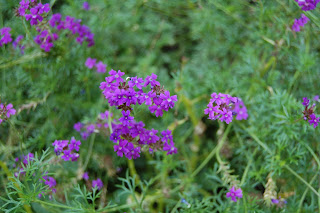Got the idea for this contraption on YouTube. It's quite a simple concept, really. To build one you'll need a 10-foot 2x4 (I used treated), #6 hardware cloth with a footprint big enough to cover the floor of the hive, a piece of plywood (I used 3/4 inch), and an 8-foot 2x2. Finally you'll need screws or nails to hold it all together.
The holes in the #6 screen are big enough for the beetles to climb through, but too small for the honey bees.
The aluminum tray I purchased for $2 at a discount store, and it slides in from the back of the hive. The tray is given a layer of canola oil (supposed to have the least odor) to about half of its depth. The 2-inch depth of the tray allows for the forward tilt of the hive with no oil spillage when carefully removing the tray.
Tomorrow my wife and I plan to do some inspecting and super-shifting, so we plan to install at least one of these at that time. We also need to combine a weak colony with a strong one, otherwise the weak one is not going to survive the winter. I'll let you know how that goes.
Monday, September 18, 2017
Sunrise: 6:31 am
Sunset: 7:46 pm
Temperature at Noon: 90 degrees
Sun's Angle at Noon: 59 degrees
UV: High
Humidity: 54%



































